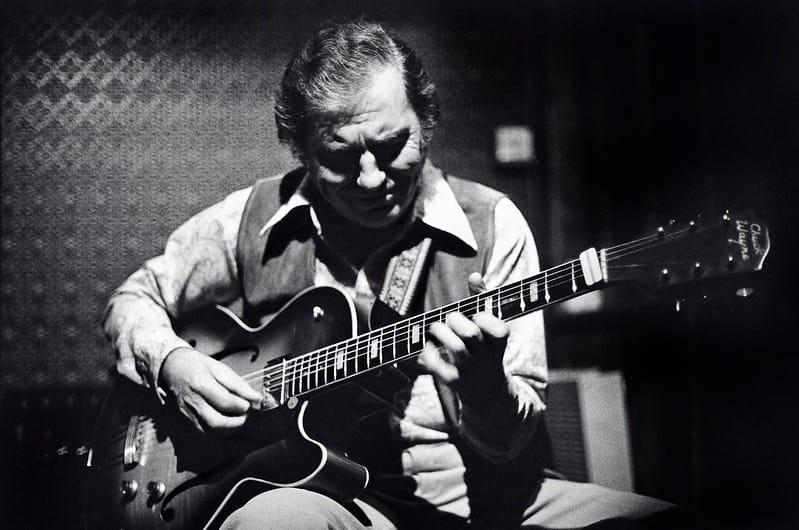Chuck Wayne Style of Guitar Picking
Chuck Wayne (1923-1997) was a prominent American jazz guitarist, known for his bebop style influenced by saxophone players like Charlie Parker and Coleman Hawkins. He played with Woody Herman's First Herd, was the first guitarist in the George Shearing quintet, and served as Tony Bennett's music director and accompanist. Wayne developed a unique technique and comprehensive approach to guitar chords and arpeggios, which he later documented in theory books. His innovative playing style and analytical approach to the fretboard had a lasting impact on jazz guitarists.
Chuck Wayne revolutionized jazz guitar by developing a unique system inspired by the legendary style of Charlie Parker. His innovative approach encompassed consecutive-alternate picking, mastering chords, scales, and arpeggios. Here is a summary of the consecutive-alternating part of Wayne's groundbreaking method.
Chuck Wayne's Consecutive-Alternate Picking
Wayne's technique involved the fluid motion of the pick, mainly utilizing the joints of the first finger and thumb rather than the wrist, hand, or arm. The pick was delicately held, allowing slight adjustments in angle as it glided across the strings. During each stroke, the pick's tip slightly dragged, pointing up on down strokes and down on up strokes. This technique was reminiscent of the classical guitar technique known as apoyando or rest stroke, particularly when executed with deliberate, unhurried strokes, enabling the pick to briefly rest on the adjacent string.

When transitioning between adjacent strings, Wayne advocated continuing a single stroke to play consecutive notes on two strings. For instance, to switch to a higher string, the down stroke would extend over two strings; conversely, when moving to a lower string, the up stroke would continue. When playing more than two notes on a single string, alternating strokes became essential (or a slur could be used, depending on the phrasing). This innovative method eliminated the monotonous "plinka-plinka" sound heard in traditional alternate picking, resulting in smooth, rapid playing.
During fast-paced passages, Wayne typically anchored his right hand slightly with the pinky fingernail resting on the pick guard, which should be positioned near and slightly below the first string. This pick guard, usually made of ebony, became famously known as the "Chuck Wayne style pick-guard" or more accurately as a "finger rest," and gained popularity among luthiers. Some guitarists fondly referred to consecutive/alternate picking as "spray picking," although Wayne himself was not particularly fond of this term.
Additionally, Wayne played a vital role in combining right-hand finger techniques with pick usage, skillfully blending plectrum and classical guitar techniques. While holding the pick conventionally, he employed his remaining three fingers to play chords and counterpoint. Wayne amazed audiences by utilizing this method to tackle challenging Bach fugues and other classical compositions. His creative use of this technique for contrapuntal improvisation truly marked an innovative breakthrough.
Wayne's mastery and groundbreaking techniques continue to have a profound impact on jazz guitarists to this day.

